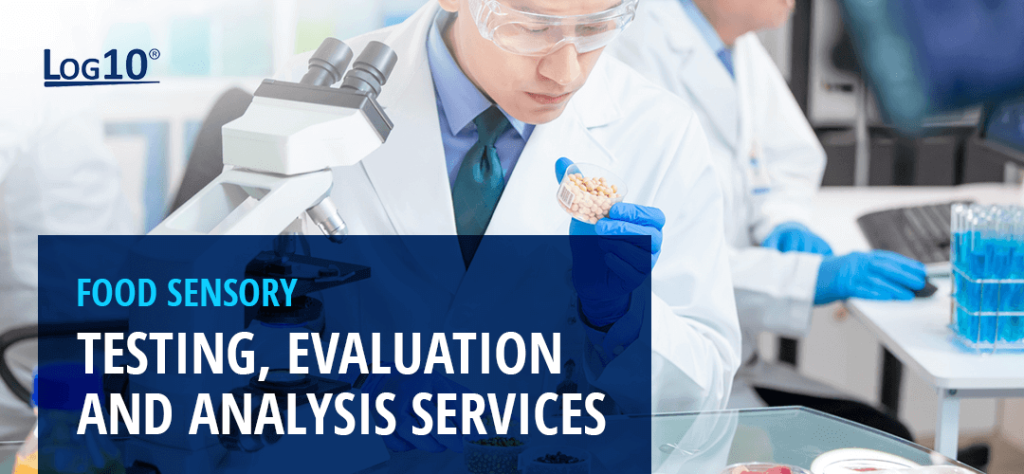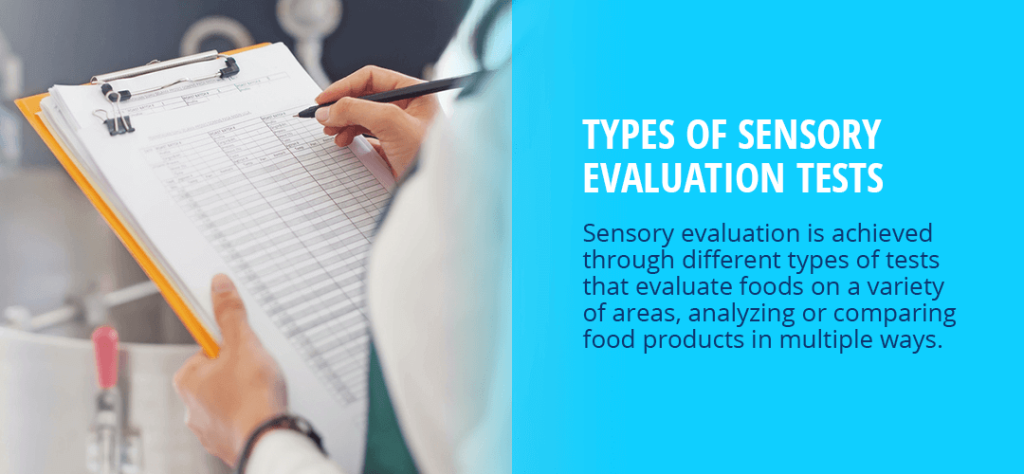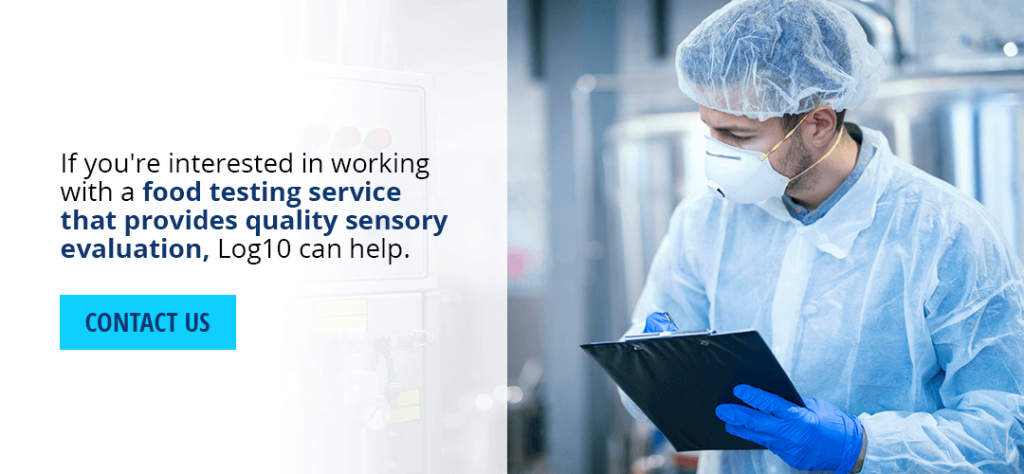
Today’s food and beverage industry is highly diverse and competitive, driven by consumer questions and desires. Food safety and quality is at the forefront of consumers’ minds. However, the sensory qualities of food are equally important. While everything else for a product may meet consumers’ expectations, they may be disappointed when the sensory properties of the food come up short. We’ll discuss sensory evaluation and analysis, its importance and its place in the food testing process.
What Is Sensory Evaluation of Food Products?
Sensory evaluation is defined by the Sensory Division of the Institute of Food Technologists as science utilized to recall, measure, analyze and explain human reactions to the food and material characteristics they hear, see, smell, touch and taste. In short, it is a type of testing that looks into how appealing food products are to the senses.
Sensory analysis of food products has been in existence in some form since humans began using their senses to judge the safety and quality of their food. As humans began to trade food and information, this sensory analysis evolved as well, involving more formalized testing procedures, professional tasters and even grading systems. Some grading systems have continued into the modern era and are used to evaluate teas, coffees and wines. Sensory testing of food products has also changed to accommodate the needs of mass-manufactured food products, resulting in modern food sensory evaluation methods.
Today’s food sensory testing is designed to be replicable, objective and unbiased and can be used across a range of food types. These tests are used in various processes within the food and beverage industry, from product development and research to quality control and shelf-life studies. In all these applications, sensory testing is used for decision-making, meaning the results of the tests need to be error-free and unbiased. To achieve this, multiple methods of food sensory analysis are used to produce detailed and comprehensive sensory data.
Why Is Sensory Evaluation Important in the Food Industry?
Modern food sensory evaluation is an essential component of food research and product development in the food and beverage industry. Because food sensory analysis provides information on how products are perceived through the senses, it offers insights into how consumers will react to the food, therefore predicting their behaviors. This is an essential evaluation technique at multiple points in the food product research and development process, as it helps develop the product and assists in quality assurance protocols, shelf-life studies and more.
Food product developers can make the following adjustments and choices using sensory testing data:
- Product ingredients: Sensory data can inform developers which combination of raw materials, ingredients and additives produces the best sensory experience, allowing them to adjust recipes to achieve the best results.
- Competitor comparisons: Sensory data may be used to compare competitor products with your company’s products. These processes involve analyzing flavor profiles to determine how the foods compare and how to set your product apart from the competition.
- “Best by” dates: Sensory data is essential in shelf-life testing studies, as these tests determine when a product begins to look, smell or taste different to the consumer. While chemical and microbiological tests can determine when a product is no longer safe to eat, food sensory tests can determine when a consumer will no longer want to eat the product.
- Product standards and grades: Sensory testing can evaluate products to establish standards or compare the product against existing standards.
These capabilities are highly important to the food and beverage industry, making sensory evaluation of food products an essential part of the testing process.
Types of Sensory Evaluation Tests
Sensory evaluation is achieved through different types of tests that evaluate foods on a variety of areas, analyzing or comparing food products in multiple ways. Food sensory tests are divided into four main groups, which are defined below:

1. Difference
Difference tests can be used to evaluate simple differences in foods. These tests may use trained or untrained testers, although trained testers tend to be more reliable. Typically, test groups for difference tests contain between 20 and 30 testers, though more are usually needed if the group includes untrained individuals.
Difference tests include the following:
- Paired comparison test: Paired comparison tests ask panelists to indicate which of two samples has more of a specific attribute than the other. For example, a panelist may be asked which sample is smoother.
- Duo-trio test: The duo-trio test involves asking panelists to taste three samples and identify which two samples are identical.
- Triangle test: The triangle test uses the same premise as the duo-trio test, providing three samples, two of which are identical. In this case, however, the testers are asked to identify which sample is different.
2. Rating
Rating tests are slightly more complex than difference tests, asking panelists to rate different samples on specific attributes. Rating tests include the following:
- Ranking test: In a ranking test, each panelist evaluates and ranks a set of samples based on a single characteristic.
- Single sample test: Also known as a monadic test, panelists are asked to indicate the presence and intensity of a single characteristic. There may be more than one sample to evaluate, but panelists will evaluate them individually, not compared to another sample.
- Two-sample difference test: In this test, panelists are given samples in pairs and evaluate how much of a difference exists between the pairs of samples. There are usually four or more pairs of samples in this test.
- Multiple sample difference test: In this test, panelists are given three to six samples at a time, with one sample serving as a “standard.” The panelist’s goal is to compare the other samples to the standard and evaluate the degree of difference between them.
- Hedonic rating test: Hedonic rating tests ask panelists to taste food samples and rate them on a scale based on how much they like or dislike the sample. Often, tasters are asked to rate each sample based on their like or dislike of different sensory aspects, or make comments about the product’s sensory qualities.
- Numerical scoring test: In this test, panelists are presented one or more samples and are asked to score each sample on a scale for a specific characteristic.
- Composite scoring test: In this test, panelists are presented with one or more samples and asked to score multiple characteristics on a rating scale.
3. Sensitivity
Sensitivity tests are done to assess the ability of a panelist to detect different tastes, odors, textures and temperatures of foods. These tests include the following:
- Sensitivity threshold test: A threshold is a point on a stimulus scale at which a difference is detected. Panelists are tested to see how sensitive they are to specific flavors and how well they can identify different levels of flavor.
- Dilution test: Dilution tests are a variation of the sensitivity threshold test where a diluted product is presented to panelists, and they are asked to taste the product to identify whether they detect the presence of the product.
4. Descriptive Test
While the results of difference tests examine whether there are any product differences that can be perceived, descriptive tests identify the specific kinds of differences and the intensities of these attributes. Unlike difference tests, descriptive tests require qualified subjects, ideally between three and 12 to produce statistically significant results. Descriptive tests are performed with the goal of producing a comprehensive sensory profile for the food product.
Choose Log10 for Sensory Evaluation
Sensory analysis of food products is an essential step in food product development and analysis. It assists in the development process to create pleasant foods, and it also helps determine the practical longevity of foods — enabling your company to develop products that are highly marketable.
If you’re interested in working with a food testing service that provides quality sensory evaluation, Log10 can help. In addition to our industry-leading chemical and microbial testing services, we offer comprehensive sensory evaluation using trained panelists. Whether you are in development or looking to improve an existing product, Log10 can develop a sensory evaluation that meets your needs.
Learn more about food sensory evaluation by contacting us today.

